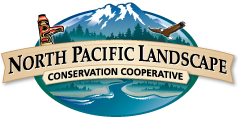Meeting Date: 9/26/2016
- 9/26/2016
Location: Webinar
Website: Website
Meeting Date: 9/26/2016
11:30 AM -1:00 PM (PDT)
Department of the Interior Secretarial Order 3336, Rangeland Fire Prevention, Management, and Restoration, called for the development of a comprehensive, science-based strategy to reduce the threat of large-scale rangeland fire to greater sage-grouse habitat and the sagebrush steppe ecosystem. On September 26, the four LCCs of the sagebrush steppe are pleased to bring you a presentation on the scientific tools and methods recently developed to support the implementation of the conservation strategy.
Speakers: Jeanne Chambers, U.S. Forest Service Rocky Mountain Research Station, and Steve Hanser, U.S. Geological Survey
The Science Framework for the Conservation and Restoration Strategy of Secretarial Order 3336 provides a strategic, multiscale approach for prioritizing areas for management and determining effective management strategies across the sagebrush biome. It includes:
A six step process linking information on sagebrush ecosystem resilience to species habitat requirements An assessment of the predominant ecosystem and anthropogenic threats Decision tools including a habitat matrix to aid in determining project areas and appropriate management actions at multiple scales Geospatial data, maps and models provided through the U.S. Geological Survey ScienceBase and BLM Landscape Approach Data Portal to support future assessments The Science Framework and geospatial crosscut are intended to complement the mitigation strategies associated with the Greater Sage-Grouse Land Use Plan amendments for the Department of the Interior Bureaus, such as the Bureau of Land Management and the U.S. Forest Service.
Join us for this webinar to learn more about the tools and science developed as part of the Framework.
